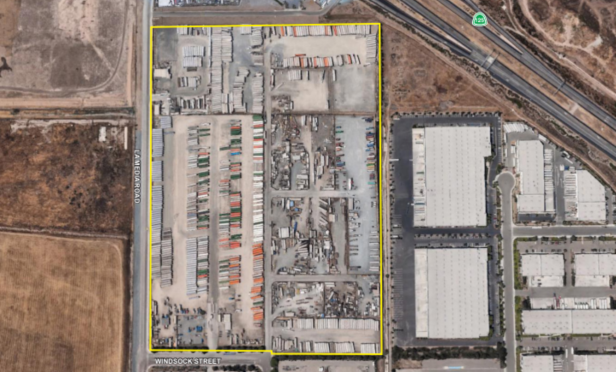 Otay Mesa is quickly becoming one of the top industrial development submarkets in San Diego. The market has developable land—a rarity in the land-tight market. Dallas-based vehicle auction company Copart has acquired 51 flat acres in Otay Mesa. The entitled land site is a rare find in the market, which currently has several class-A projects under construction.
Otay Mesa is quickly becoming one of the top industrial development submarkets in San Diego. The market has developable land—a rarity in the land-tight market. Dallas-based vehicle auction company Copart has acquired 51 flat acres in Otay Mesa. The entitled land site is a rare find in the market, which currently has several class-A projects under construction.
“In Otay Mesa, it is not easy to find a piece of land that is fully entitled, doesn't have to go through biological mitigation and is flat,” Rob Hixson, SVP at CBRE, tells GlobeSt.com. “This worked out nicely for the use of the buyer—it was a flat piece of land; it had six inches of crushed concrete and sewer water. Plus, they don't have to do an biological mitigation, which is the real challenge in Otay Mesa.” Hixson brokered the deal on behalf of the seller.
This was an off-the-market deal. Copart was looking for a site that could accommodate car storage, which is unusual in the Otay Mesa market. “We were in escrow on another piece, but it had a major use permit for the buyer's use,” Hixson says. “That major use permit had to be renewed every five years. Most people don't want to live with the risk that their use wouldn't be reapproved every five years.”
In general, developers are targeting ecommerce and third-party logistics users and manufacturers. “I am seeing a lot of activity from developers right now,” adds Hixson. “There four different developers in the process of entitling land and getting ready to build speculative industrial sites.”
The submarket has become popular for its availability of land, of course, but also the access to labor. “We don't have land anywhere else,” says Hixson. “The properties in Otay Mesa are brand-new and well thought out, and we have new better freeways now, making it really easy to get there. The market also has a great workforce. You can get all of the workers you want with Green Cards that come across the border daily.”
While there is a current development frenzy in Otay Mesa, Hixson says the construction obstacles—specifically increasing costs—could disrupt the market. “The cost of construction and the cost of mitigation and storm water detention keep going up. Those costs are taking away from the value of the land,” he says. “I think the land would appreciate a lot more if we didn't have those rising expenses.”
Want to continue reading?
Become a Free ALM Digital Reader.
Once you are an ALM Digital Member, you’ll receive:
- Breaking commercial real estate news and analysis, on-site and via our newsletters and custom alerts
- Educational webcasts, white papers, and ebooks from industry thought leaders
- Critical coverage of the property casualty insurance and financial advisory markets on our other ALM sites, PropertyCasualty360 and ThinkAdvisor
Already have an account? Sign In Now
*May exclude premium content© 2025 ALM Global, LLC, All Rights Reserved. Request academic re-use from www.copyright.com. All other uses, submit a request to [email protected]. For more information visit Asset & Logo Licensing.








